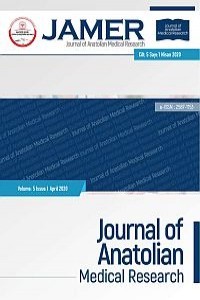Investigation of Seroprevalence of Toxoplasma, Rubella and Cytomegalovirus in Pregnant Population in Istanbul
Toxoplasma, rubella, cytomegalovirus, pregnancy, seroprevalence
___
- Referans1 RK, Maity S, Saha S. A review on TORCH: groups of congenital infection during pregnancy. J Sci Innov Res. 2014;3(2):258–64.
- Referans2 Akpınar O, Akpınar H. Investıgatıon of the rubella and cytomegalovırus seroprevalences by ELISA method ın pregnant women. Balikesir Saglik Bil Derg. 2017;6:11–5.
- Referans3 Boyer SG, Boyer KM. Update on TORCH infections in the newborn infant. Newborn Infant Nurs Rev. 2004 Mar 1;4(1):70–80.
- Yayın Aralığı: Yılda 3 Sayı
- Başlangıç: 2016
- Yayıncı: Kayseri EAH
Emrah KIZILAY, Gökhan SÖNMEZ, Şevket Tolga TOMBUL, Türev DEMİRTAŞ, Abdullah DEMİRTAS
Sema ALAÇAM, Ayfer BAKIR, Aysel KARATAS, Belkıs YOLBURUN, Özlem UZUNKAYA, Ferda AKTAŞ, Mehmet CANBERK
Hipertrigliseridemiye Sekonder Pankreatit: Bir Olgu Sunumu
Abdul Karim ARİDA, Omar KHADDAM, Sara ALNAHER, Ashraf ELGHUL
Hastanelerde Karbapeneme Dirençli Gram Negatif Bakteri Enfeksiyonlarının Kontrolü
Spontan Pnömotoraksla Gelen Wegener Granülomatozisli Olgu ve Literatürün Gözden Geçirilmesi
Nur Aleyna YETKİN, İnsu YILMAZ
Metin YILDIZ, Mehmet Salih YILDIRIM, Recep GÜNDÜZ, Güray OKYAR
